10 regional German words that will make you sound like a local
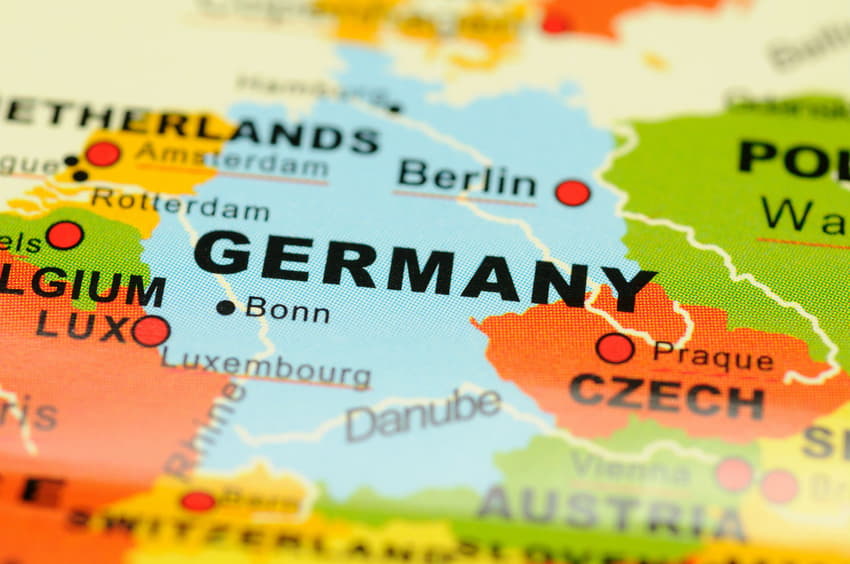
These words will come in handy when you're exploring Germany. And if you can get them right, you'll sound like a local.
Germany is one of Europe’s most decentralized countries, which makes sense considering the country didn’t exist until 1871, and the Bundesrepublik, featuring east and west Germany we know today is still young.
In the past, Germany was made up of several smaller political entities, the largest being Prussia. As a result of this, each region of Germany still has a distinct dialect and vocabulary.
German magazine show Galileo compiled a list of 10 of German’s strangest dialect words. From the niche vocabulary to the simply unpronounceable, here is your guide to really sounding like a local.
1. der Schamstrich (Region: Saxony)
“Schamstrich” is the Saxon way of describing a significant other, which originated in 18th century Austria. For Germans without Saxon blood, they’d call their partners “der Liebhaber” or “der Heiratskandidat”.
The term evolved from “Ihr geschamster Diener”, which was a formal way of starting and ending letters. This phrase was typically a respectful term used to address those of a higher social status.
Over time, the respectful “geschamster” developed into a term of affection. Thus giving the Saxons their local term of endearment “der Schamstrich”. Though if you’re in Bavaria, your “Schamstrich” would be your “Gspusi”.
READ ALSO: Grüß Gott, Moin, Hallo! Your complete guide to regional dialects around Germany
2. die Tohuussied (Region: Schleswig-Holstein)
Typically, German words to describe new technology are heavily influenced by English. If Germans don’t use the English word, there’s usually a Denglish (a German/English hybrid) term they’d adopt.
But not in Schleswig-Holstein. “Die Tohuussied” is a combination of the local Plattdeutsch words for “home”, which is “Tohuus” (“Heim” in standard German), and “page”, which is “Sied” (“Seite” in standard German).
You guessed it, “die Tohuussied” is the local word to describe the homepage on an internet browser. A refreshing alternative to “die Heimseite” or “die Homepage” which is heard across the rest of the country.
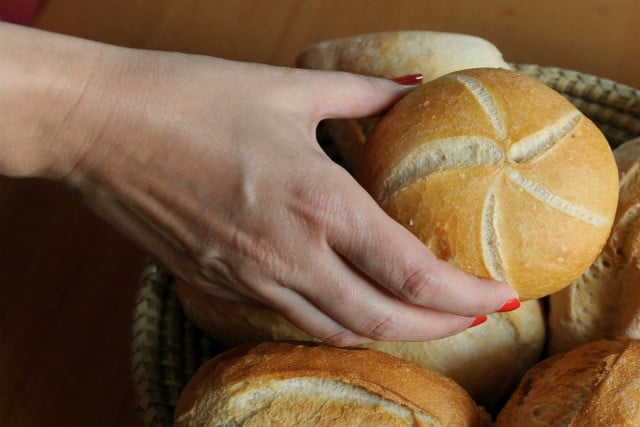 Photo: DPA
Photo: DPA
3. der Schusterjunge (Region: Berlin)
If you hear a Berliner order a “Schusterjunge” in the bakery queue, don’t be alarmed. Though this literally translates as “cobbler’s apprentice”, it means something else according to the Berlin dialect.
Schusterjunge is a slang term for the traditional Berlin rye bread roll, known as “das Roggenbrötchen” in standard German. A bread roll, “das Brötchen”, is described in many ways depending on where in Germany you are. In Bayern, you may call it “die Semmel”, in Baden-Württemberg, you’re more likely to hear “der Wecken” and in Berlin, you may even call a bread roll “die Schrippe”.
READ ALSO: The German words we use everyday - that are actually French
The story behind the name “der Schusterjunge” comes from Prussia. Bread rolls would be sold with a “Langsspält” (a split in the middle), and customers wouldn’t want bread rolls without this split as they’d assume the roll hadn’t formed properly.
Bakers would sell the rolls without a split for a cheaper price, and these cheaper rolls were typically all that “Schuterjungen” (cobbler’s apprentices) could afford. So, these smaller rye bread rolls without a split in the middle were named after them.
4. der Lauschepper (Region: North Rhine-Westphalia)
“Der Lauschepper” is a regional word from the Ruhr region which describes a scrounger or freeloader. The prefix of the term is a subtle nod to the standard German phrase “für lau”, which means “for free”.
Lauschnepper is a regional alternative to the term “der Schnorrer”, which is also found in Yiddish.
Whilst the English translation “scrounger” has negative connotations, the term itself “Schnorrer” can also be used as a backhanded compliment to someone’s thriftiness.
In 17th century, Schnorrers were thought of very highly in Germany's Jewish community. After taking donations from the rich (which helped them fulfil their religious duties), they’d often pass on the money they gathered to poorer jews.
Other Schnorrers would rely on the hospitality of their community so that they could preach to the public for free.
5. das Mohdschegiebschen (Region: Saxony)
“Mohdschegiebschen” is used across Germany as a term of endearment for your Schamstrich. However, in Saxony, a Mohdschegiebschen refers to what the rest of Germany calls “der Marienkäfer”: a ladybird.
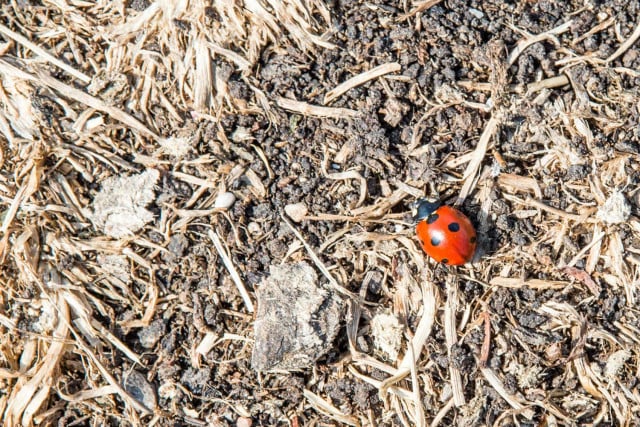
Photo: DPA
Ladybirds are also sometimes referred to in German as “kleine Kühe” (little cows). There are many legends surrounding this term, but the most common is that farmers’ children named ladybirds little cows as a result of both their spots and their usefulness.
While cows were essential to ensuring farmers’ survival during crisis times, ladybirds were also highly useful as they’d eat greenflies and other insects that threatened crops.
6. die Ringeligängeli (Region: Baden-Württemberg)
Baden-Württemberg enjoyed their fair share of Oktoberfest celebrations over the past week, and many in the region probably saw a “Ringeligängeli” or two.
A Ringeligängeli is someone who can’t walk in a straight line after a few too many drinks. The word combines “der Ring” (circle) and “der Gang” (which can mean both path or sidewalk, and the way someone walks).
“Die Schlangenlinie” (a wavy line) is the standard German alternative which is closest in meaning to the exclusively-Swabian term Ringeligängli.
7. das Scheesewähnsche (Region: Saarland)
No, it’s nothing to do with cheese, “das Scheesewähnsche” is in fact Saarland’s local word for a pram, or “der Kinderwagen’ in standard German.
The origins of the term can be explained by both the region’s geography and history. Saarland is a small Bundesland (region) on Germany’s border with France. Saarland was not only part of the French Zone following World War Two, but was even part of France till the end of the 18th century.
So its unsurprising that Saarland’s dialectal words have their roots in France. “Scheese”, or “der Stuhl” in standard German, evolved from “la chaise” (French for chair), and “Wähnsche” is Saarland’s term for “Wägelchen” (a small wagon).
8. die Tunneleule (Region: Berlin)
“Tunneleule”, meaning “tunnel owl” is a Berlin term used to describe the U Bahn (the underground train).
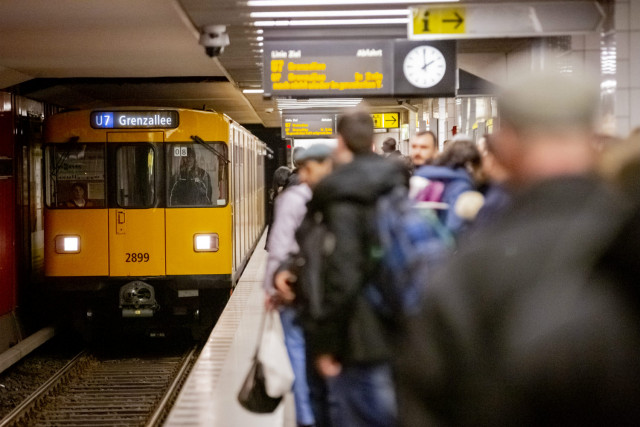
Photo: DPA
The term originated thanks to the 1924 U Bahn model, which had large headlights that reminded Berliners of an owl’s eyes as it emerged from the pitch-black tunnel into the station.
Though modern U Bahn’s don’t quite resemble owls, the term is still in usage, especially among the older generation.
9. das Breschdlengsgsälz (Region: Bavaria, Baden-Württemberg)
The Swabians of South Germany have their own dialectal word for strawberry jam: “das Beschdlengsgsälz” (try getting a Ringeligängeli to say that).
“Breschdleng” is the local word for strawberries, which would be “die Erdbeeren” in standard German, and “das Gsälz” is the Swabian word for marmalade or jam.
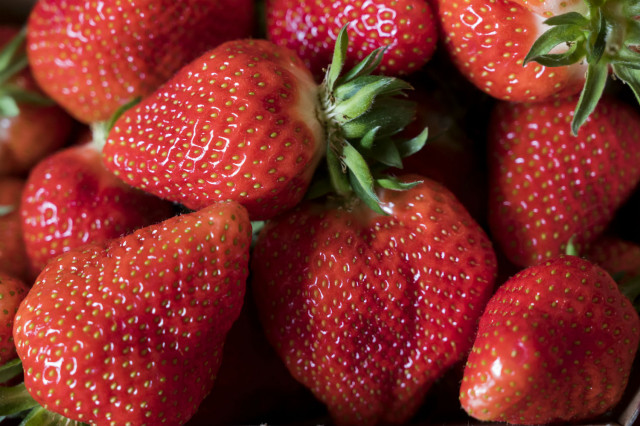
Breschdleng or Erdbeeren? You decide. Photo: DPA
It may be surprising that Gsälz refers to something sweet rather than salty, considering the German verb “salzen” means “to salt”.
In fact, salting was once the primary method for conserving food, and it was only later realised that sugar could do the same job. Whilst sugaring food was a new method, it retained the same verb “salzen”.
In Swabia, sugar conservation is still known as Gsälz.
READ MORE: Introducing Swabians - "the Scots of Germany"
10. der Böönhaas (Region: Schleswig-Holstein)
“Böönhaas” would be “der Dachbodenhase” in standard German, or “an attic hare” in English. The term describes illegal manual labourers that worked in the region until 1900.
At that time, a strict “Zunftwesen” (guild system) existed, which only allowed manual labourers with a license (which was known as “eine offizielle Genehmigung”) and respective training to legally be contracted for work.
Of course, not everyone could afford a license and training, so instead they would work illegally on the black market.
These workers were cheaper to employ, but weren’t able to work in the open. So, they would work hidden away in attics (der Dachboden in standard German, or der Böön in the northern dialect).
These workers became known as “attic hares”, which nods to the German expression “flink wie ein Hase”, which means “quick as a hare”. A Böönhaas needed to work quickly and subtly, because if he was caught, he’d be chased out of the city.
Comments (1)
See Also
Germany is one of Europe’s most decentralized countries, which makes sense considering the country didn’t exist until 1871, and the Bundesrepublik, featuring east and west Germany we know today is still young.
In the past, Germany was made up of several smaller political entities, the largest being Prussia. As a result of this, each region of Germany still has a distinct dialect and vocabulary.
German magazine show Galileo compiled a list of 10 of German’s strangest dialect words. From the niche vocabulary to the simply unpronounceable, here is your guide to really sounding like a local.
1. der Schamstrich (Region: Saxony)
“Schamstrich” is the Saxon way of describing a significant other, which originated in 18th century Austria. For Germans without Saxon blood, they’d call their partners “der Liebhaber” or “der Heiratskandidat”.
The term evolved from “Ihr geschamster Diener”, which was a formal way of starting and ending letters. This phrase was typically a respectful term used to address those of a higher social status.
Over time, the respectful “geschamster” developed into a term of affection. Thus giving the Saxons their local term of endearment “der Schamstrich”. Though if you’re in Bavaria, your “Schamstrich” would be your “Gspusi”.
READ ALSO: Grüß Gott, Moin, Hallo! Your complete guide to regional dialects around Germany
2. die Tohuussied (Region: Schleswig-Holstein)
Typically, German words to describe new technology are heavily influenced by English. If Germans don’t use the English word, there’s usually a Denglish (a German/English hybrid) term they’d adopt.
But not in Schleswig-Holstein. “Die Tohuussied” is a combination of the local Plattdeutsch words for “home”, which is “Tohuus” (“Heim” in standard German), and “page”, which is “Sied” (“Seite” in standard German).
You guessed it, “die Tohuussied” is the local word to describe the homepage on an internet browser. A refreshing alternative to “die Heimseite” or “die Homepage” which is heard across the rest of the country.
 Photo: DPA
Photo: DPA
3. der Schusterjunge (Region: Berlin)
If you hear a Berliner order a “Schusterjunge” in the bakery queue, don’t be alarmed. Though this literally translates as “cobbler’s apprentice”, it means something else according to the Berlin dialect.
Schusterjunge is a slang term for the traditional Berlin rye bread roll, known as “das Roggenbrötchen” in standard German. A bread roll, “das Brötchen”, is described in many ways depending on where in Germany you are. In Bayern, you may call it “die Semmel”, in Baden-Württemberg, you’re more likely to hear “der Wecken” and in Berlin, you may even call a bread roll “die Schrippe”.
READ ALSO: The German words we use everyday - that are actually French
The story behind the name “der Schusterjunge” comes from Prussia. Bread rolls would be sold with a “Langsspält” (a split in the middle), and customers wouldn’t want bread rolls without this split as they’d assume the roll hadn’t formed properly.
Bakers would sell the rolls without a split for a cheaper price, and these cheaper rolls were typically all that “Schuterjungen” (cobbler’s apprentices) could afford. So, these smaller rye bread rolls without a split in the middle were named after them.
4. der Lauschepper (Region: North Rhine-Westphalia)
“Der Lauschepper” is a regional word from the Ruhr region which describes a scrounger or freeloader. The prefix of the term is a subtle nod to the standard German phrase “für lau”, which means “for free”.
Lauschnepper is a regional alternative to the term “der Schnorrer”, which is also found in Yiddish.
Whilst the English translation “scrounger” has negative connotations, the term itself “Schnorrer” can also be used as a backhanded compliment to someone’s thriftiness.
In 17th century, Schnorrers were thought of very highly in Germany's Jewish community. After taking donations from the rich (which helped them fulfil their religious duties), they’d often pass on the money they gathered to poorer jews.
Other Schnorrers would rely on the hospitality of their community so that they could preach to the public for free.
5. das Mohdschegiebschen (Region: Saxony)
“Mohdschegiebschen” is used across Germany as a term of endearment for your Schamstrich. However, in Saxony, a Mohdschegiebschen refers to what the rest of Germany calls “der Marienkäfer”: a ladybird.

Photo: DPA
Ladybirds are also sometimes referred to in German as “kleine Kühe” (little cows). There are many legends surrounding this term, but the most common is that farmers’ children named ladybirds little cows as a result of both their spots and their usefulness.
While cows were essential to ensuring farmers’ survival during crisis times, ladybirds were also highly useful as they’d eat greenflies and other insects that threatened crops.
6. die Ringeligängeli (Region: Baden-Württemberg)
Baden-Württemberg enjoyed their fair share of Oktoberfest celebrations over the past week, and many in the region probably saw a “Ringeligängeli” or two.
A Ringeligängeli is someone who can’t walk in a straight line after a few too many drinks. The word combines “der Ring” (circle) and “der Gang” (which can mean both path or sidewalk, and the way someone walks).
“Die Schlangenlinie” (a wavy line) is the standard German alternative which is closest in meaning to the exclusively-Swabian term Ringeligängli.
7. das Scheesewähnsche (Region: Saarland)
No, it’s nothing to do with cheese, “das Scheesewähnsche” is in fact Saarland’s local word for a pram, or “der Kinderwagen’ in standard German.
The origins of the term can be explained by both the region’s geography and history. Saarland is a small Bundesland (region) on Germany’s border with France. Saarland was not only part of the French Zone following World War Two, but was even part of France till the end of the 18th century.
So its unsurprising that Saarland’s dialectal words have their roots in France. “Scheese”, or “der Stuhl” in standard German, evolved from “la chaise” (French for chair), and “Wähnsche” is Saarland’s term for “Wägelchen” (a small wagon).
8. die Tunneleule (Region: Berlin)
“Tunneleule”, meaning “tunnel owl” is a Berlin term used to describe the U Bahn (the underground train).

Photo: DPA
The term originated thanks to the 1924 U Bahn model, which had large headlights that reminded Berliners of an owl’s eyes as it emerged from the pitch-black tunnel into the station.
Though modern U Bahn’s don’t quite resemble owls, the term is still in usage, especially among the older generation.
9. das Breschdlengsgsälz (Region: Bavaria, Baden-Württemberg)
The Swabians of South Germany have their own dialectal word for strawberry jam: “das Beschdlengsgsälz” (try getting a Ringeligängeli to say that).
“Breschdleng” is the local word for strawberries, which would be “die Erdbeeren” in standard German, and “das Gsälz” is the Swabian word for marmalade or jam.

Breschdleng or Erdbeeren? You decide. Photo: DPA
It may be surprising that Gsälz refers to something sweet rather than salty, considering the German verb “salzen” means “to salt”.
In fact, salting was once the primary method for conserving food, and it was only later realised that sugar could do the same job. Whilst sugaring food was a new method, it retained the same verb “salzen”.
In Swabia, sugar conservation is still known as Gsälz.
READ MORE: Introducing Swabians - "the Scots of Germany"
10. der Böönhaas (Region: Schleswig-Holstein)
“Böönhaas” would be “der Dachbodenhase” in standard German, or “an attic hare” in English. The term describes illegal manual labourers that worked in the region until 1900.
At that time, a strict “Zunftwesen” (guild system) existed, which only allowed manual labourers with a license (which was known as “eine offizielle Genehmigung”) and respective training to legally be contracted for work.
Of course, not everyone could afford a license and training, so instead they would work illegally on the black market.
These workers were cheaper to employ, but weren’t able to work in the open. So, they would work hidden away in attics (der Dachboden in standard German, or der Böön in the northern dialect).
These workers became known as “attic hares”, which nods to the German expression “flink wie ein Hase”, which means “quick as a hare”. A Böönhaas needed to work quickly and subtly, because if he was caught, he’d be chased out of the city.
Join the conversation in our comments section below. Share your own views and experience and if you have a question or suggestion for our journalists then email us at [email protected].
Please keep comments civil, constructive and on topic – and make sure to read our terms of use before getting involved.
Please log in here to leave a comment.